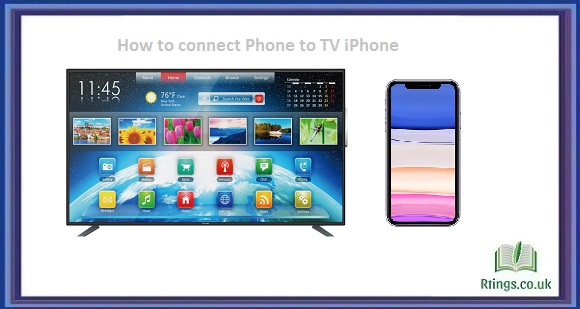The need for an aerial (also known as an antenna) for a smart TV depends on how you plan to use your TV and the type of content you want to access. Smart TVs are designed to connect to the internet and stream content from various online sources, but there are scenarios where an aerial may still be required or beneficial. In this detailed explanation, we’ll explore the factors that influence whether or not you need an aerial for your smart TV.
What is Smart TVs
Smart TVs have become increasingly popular because they offer a range of features that enhance your TV-watching experience. These features include built-in internet connectivity, app support, streaming services, and the ability to browse the web. Smart TVs combine a traditional television and a computer, making them more versatile and capable than standard TVs.
Streaming and Internet Content
One of the primary functions of a smart TV is to stream content from the internet. With a stable internet connection, you can access a wide variety of online services, including:
Streaming Platforms: Services like Netflix, Amazon Prime Video, Hulu, Disney+, YouTube, and many others allow you to directly stream movies, TV shows, documentaries, and original content through your smart TV.
Catch-Up TV: Many smart TVs support broadcasters’ catch-up TV services. These services, like BBC iPlayer, ITV Hub, and All 4 in the UK, allow you to watch recently aired programs on-demand.
Live TV Streaming: Some smart TVs can stream live TV channels over the internet through apps and services. These channels may include news, sports, and entertainment options.
Web Browsing: Smart TVs often come with built-in web browsers that enable you to access websites and online content. This can be useful for checking news, weather, or social media on your TV.
Aerial and Terrestrial Broadcasting
While smart TVs excel at internet-based content, they also support traditional terrestrial broadcasting via an aerial or antenna. In regions with over-the-air (OTA) broadcasting, you can connect an aerial to your smart TV to access free-to-air channels. Here’s how it works:
Terrestrial Channels: Terrestrial TV broadcasting sends signals over the airwaves using radio frequency (RF) signals. In many countries, a range of free-to-air channels is available through this method. These channels may include network TV stations, local channels, public broadcasters, and more.
Aerial Connection: To access terrestrial channels, you’ll need to connect an aerial or antenna to your smart TV. This allows the TV to receive RF signals and tune into the available channels.
Channel Scanning: After connecting the aerial, your smart TV will typically have a channel scanning feature that detects and adds available channels to your TV’s channel lineup. This process is necessary to ensure you can access local and national broadcasts.
Do You Need an Aerial for a Smart TV?
Now, let’s address the question: Do you need an aerial for a smart TV? The answer depends on your TV-watching preferences and circumstances:
No, You Don’t Need an Aerial
If your primary goal is to watch online streaming content, catch-up TV, and web-based applications on your smart TV, you don’t need an aerial. These services rely solely on an internet connection; you can access them without external equipment. As long as your smart TV is connected to the internet, you can enjoy a vast array of digital content.
Yes, You Need an Aerial
You will need an aerial if:
You want to watch local terrestrial channels: If you wish to access local broadcast stations and free-to-air channels, you’ll need an aerial. This is especially important for live events, local news, and specific programs only available via traditional broadcasting.
Your region relies on terrestrial broadcasting: In some areas, terrestrial broadcasting may be the primary or sole method of receiving TV signals. An aerial is essential for basic TV access if you live in such a region.
You want to enjoy HD channels: Over-the-air broadcasts often include high-definition (HD) channels that provide superior image quality compared to standard-definition streaming. You’ll need an aerial capable of receiving HD signals to access HD channels.
Types of Aerials for Smart TVs
If you need an aerial for your smart TV, choosing the right type of aerial is essential based on your location and requirements. Here are some common types of aerials:
Indoor Aerials
Indoor aerials are compact and designed to be placed indoors, typically near the TV. They are suitable for areas with strong signal reception. Indoor aerials are convenient but may only work well in regions with strong or obstructed signals.
Outdoor Aerials
Outdoor aerials are installed outside the home on rooftops or in attics. They provide better reception and are ideal for areas with weak signals or signal interference. Outdoor aerials are more complex to install but offer improved signal quality.
Amplified Aerials
Amplified aerials come with built-in signal amplifiers to boost reception. They can be used in areas with moderate signal strength to improve signal quality. Amplified indoor aerials are also available for enhanced indoor reception.
Directional Aerials
Directional aerials are designed to be pointed in a specific direction to receive signals from a particular transmitter. They are useful in areas with multiple transmitters and can help optimize signal reception.
Multi-Directional Aerials
Multi-directional aerials are designed to receive signals from multiple directions, making them suitable for areas with signals from various sources. They offer versatility in signal reception.
Installing and Setting Up an Aerial
If you decide to install an aerial for your smart TV, follow these general steps:
Choose the Right Aerial
Select an aerial type that suits your needs based on signal strength, location, and specific requirements (e.g., indoor or outdoor installation).
Find the Optimal Location
Place the aerial in a location that receives the best signal for indoor aerials. Avoid obstructions and interference from electronic devices. For outdoor aerials, consult a professional installer for the best placement.
Connect the Aerial
Connect the aerial to the designated aerial input on your smart TV. Most smart TVs have a coaxial cable input for this purpose.
Scan for Channels
Use your smart TV’s channel scanning or tuning feature to detect and add available channels. Follow the on-screen instructions to complete the scanning process.
Fine-Tune and Test
After scanning, fine-tune your TV settings and test the channels to ensure proper reception. You may need to adjust the orientation or position of the aerial for optimal signal strength.
Conclusion
Your smart TV’s need for an aerial depends on your viewing preferences and location. You can use your smart TV without an aerial if you primarily watch online streaming content and don’t require access to local terrestrial channels. However, an aerial is essential if you want access to local broadcasts, live events, and HD channels. Choose the right type of aerial based on your location and setup, and follow the installation steps to enjoy a comprehensive TV-watching experience that includes both online and terrestrial content. Ultimately, choosing an aerial depends on how you want to use your smart TV and the available broadcasting options in your area.






